| HOME | PROFILE | SERVICES | MEETINGS & INCENTIVES | TRANSPORT | TOURS | PACKAGES | STUDENTS | CONTACT US |
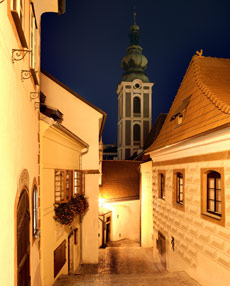
AUSTRIA
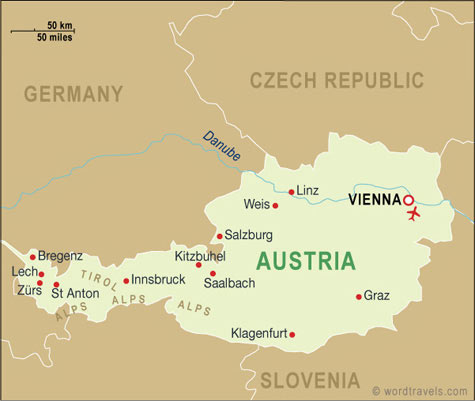
Landlocked in the heart of Europe, Austria runs from the Alps in the west down to Vienna and the Danube in the east. For six centuries it was the heart of the mighty Hapsburg Empire, which at its peak included what is now Poland, Hungary and the Czech Republic along with much of Romania, Bulgaria and the Balkans. The country's imperial inheritance is particularly striking in the grand buildings and cultural institutions of the Baroque-flavoured capital, Vienna, resplendent with palaces and captivating churches, cosy coffeehouses and inns, and grand ballrooms where Strauss waltzes still draw dancers onto the floor.
Another of the great classical composers spawned by Austria was Mozart, born in Salzburg, a beautiful historic city where stunning Baroque churches rise up against the backdrop of the Austrian Alps. The Alps stretch west to Switzerland and in winter skiers come from all continents to carve the slopes and experience the charm of the alpine villages and their welcoming inhabitants.
The charm of Austria may lie in its preservation of a romantic classical past, but this does not mean modern Austria has stood back from development. Behind the stunning scenery and antique architecture a vibrant industrial and commercial society goes about its business in the cities and towns. Austrians work hard, but they also know how to play hard. Austrian hospitality and cuisine are legendary. From a cruise on the magnificent Danube River to a cycle tour through the Alpine meadows or a breath-taking day's sightseeing in busy Vienna, visitors to Austria find it impossible to fit in a dull moment.
Austria Attractions
Austria is perfect for sightseeing, with an assortment of wonderful tourist attractions; just the mention of this scenic, multicultural country brings to mind images of skiing in the Alps, exploring Vienna's impressive Baroque architecture and sampling the warm, rich cuisine of the alpine villages and their friendly inhabitants.
Austria is the birthplace of many famous figures, including Wolfgang Amadeus Mozart and Sigmund Freud, not to mention Arnold Schwarzenegger. Austria is also home to Swarovski crystals, Lipizzaner stallions and the 11th-century Hohensalzburg Fortress, as well as one of the largest youth parties in Europe, the Danube Island Festival.
Austria is a year-round destination, with snowy winters perfect for mountaineering, skiing and snowboarding, and mild summers ideal for sightseeing. The many sights and attractions are made accessible by the national railway system, the U-Bahn, extensive motorways and various ports and harbours. With all these magnificent highlights so easily within grasp, taking a trip to this beautiful country in the warm heart of Europe is guaranteed to be a fulfilling, memorable experience for anyone!
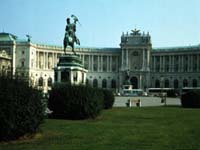 Hofburg
Hofburg
The Hofburg Palace, or Imperial Palace, was the home of the Austrian Hapsburgs for 600 years. The first fortifications were erected by King Ottakar Premyst in the 13th century and were added to by every generation until it became the monumental structure it is today. As well as housing the president's offices, the palace now encompasses 22 separate museums, the National Library, a 14th-century Augustinian church, the famous Spanish Riding School and the Royal Chapel, where every Sunday the Vienna Boy's Choir sing Mass (they have performed for the Royal Court since 1498). It will be impossible to even catch a glimpse of everything on display at the Hofburg, so visitors should be selective. The most popular of the museums is the Kaiserappartements, which takes visitors on a tour of the Kaiser's imperial apartments, the Sisi Museum, and the Imperial Silver Collection.
 Spanish Riding School
Spanish Riding School
The Spanish Riding School of Vienna is the oldest and last riding school in the world where classic dressage is still practised in its purest form. This Institute was founded in 1572 and named for the Lipizzaner horses, which are of Spanish origin. The Imperial Court Stud was originally situated near the village of Lipizza (hence the name of the horses) but since the collapse of the Danube Monarchy in 1920 they have been bred at the Federal Stud in Styria. The horses perform their tricks in the Winter Riding School, which was commissioned by Emperor Karl VI. Performances take place between February and June, September and December but are in high demand and booked up months in advance (details on their website). The easiest way to see the horses is during their training sessions. Tickets are only available at the door, and cannot be booked in advance. Situated in the stables is the Lipizzaner Museum, which displays the history of the school.
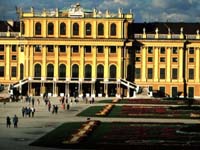 Schönbrunn Palace
Schönbrunn Palace
The magnificent Schönbrunn Palace was used as the summer residence of the Hapsburgs from the 18th century onwards. Set amongst superb gardens this vast, symmetrical structure is everything you would imagine an imperial palace to be. A tour of the palace offers visitors the chance to view the superb assortment of Baroque and Rococo State Rooms and to admire the famous ceiling frescoes of the Great Gallery and the Hall of Mirrors where Mozart once played. The vast gardens are popular with locals and tourists alike, and include a zoo, a maze and labyrinth, the Privy garden, and the Gloriette with viewing terrace. Also within the grounds, the Orangery plays host to classical concerts during the summer season.
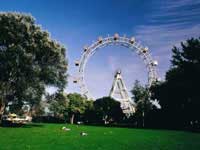 Giant Wheel
Giant Wheel
One of Vienna's most recognisable attractions, the Giant Wheel is located in a large wooded park and playground known as the Prater. It was built in 1897 by an English engineering firm and is the only one of its era still standing (the ferris wheels in Chicago, London, Blackpool and Paris have long since been destroyed). The wheel with its 15 gondolas takes twenty minutes to manoeuvre around and offers magnificent panoramic views of the city.
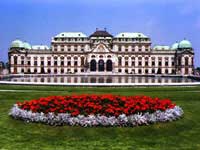 Belvedere
Belvedere
The Belvedere consists of two splendid rococo mansions, designed in the early 18th century, which face each other across formal, sloping grounds offering excellent views over the city. From the outside it is Vienna's finest palace complex, built by Prince Eugène of Savoy (1680-1735), the famous general who saved Vienna from the advance of the Ottoman Empire. The museums in the two palaces house some of Vienna's most renowned art galleries, offering excellent examples of Austrian art from the middle ages to present day. Their displays include an unrivalled collection of paintings by Klimt as well as famous works by Schiele and Kokoschka, Renoir and Monet. The Medieval and Baroque works are presented in the Lower Palace where many rooms have been preserved in their original state.
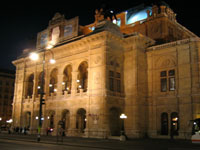 Vienna State Opera
Vienna State Opera
The Vienna State Opera performs a repertoire of near-one hundred operas, operettas and ballets every day from September to June. The opera house was founded in the early 18th century (it was rebuilt in 1955 after being all but destroyed in 1945) and makes for a romantic and regal setting in which to enjoy the performances. As seating tickets are not easily available, an alternative is to buy standing-room tickets, which are well priced and can be purchased on the same day (but expect long queues). The State Opera collaborates closely with the Vienna Philharmonic Orchestra, and their famous New Year concert requires advance bookings of up to one year.
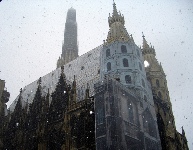 St Stephen’s Cathedral
St Stephen’s Cathedral
The Cathedral is one of the city's most recognisable symbols and the massive south tower standing at 445 feet (136m) tall is a dominant feature on the Vienna skyline. The 343 steps can be climbed for a fantastic view over the city. St Stephan's Cathedral is the most important religious building in the city and is one of the greatest Gothic structures in Europe, and has been in a state of continual preservation and repair since its original construction in the 12th century due to fire, city sieges and bombardment. The cathedral is built of limestone and has an ornately patterned and richly coloured roof covered by glazed tiles. The interior is rich in wood carvings, sculptures and paintings and has numerous chapels and altars, as well as the catacombs, which can be visited on a guided tour. Wolfgang Amadeus Mozart was married here, had children baptised here, and his funeral was held in the Chapel of the Cross.
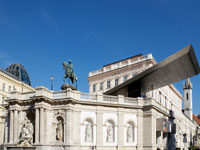 The Albertina
The Albertina
The former Hofburg residence today houses one of the largest and greatest graphic art collections in the world with drawings, old master prints and modern graphic works. The museum explores the development of graphic arts since the 14th century and there are over 60,000 works on show, including works by Leonardo da Vinci, Michaelangelo, Manet, Picasso and Cezanne. The Albertina is also one of the most beautiful examples of classical architecture in the world.
Austria Events

Vienna Ball Season
Venue: Various
Date: December to February
Vienna is the only city in the world where balls still dominate the social calendar during the winter season, and a Viennese ball is a unique opportunity to experience the sophisticated charm of the city and the famous Viennese waltz. The official ball season offers about 300 public balls for every taste and pocket, of which the most famous are the Opera Ball, the social elite highlight of the European ball season, the Philharmoniker Ball, and the glamorous Kaiserball (Imperial Ball) at the imperial Hofburg Palace, which is the traditional opener and is a glittering New Year's Eve celebration which attracts tourists and Viennese alike. The season officially lasts from New Year's Eve until Ash Wednesday the following year, but balls can occur up until June. Numerous rental services in the city specialise in ball gowns and formal wear.

New Year’s Day Concert
Venue: Vienna Musikverein
Date: 1 January, annually
Performed by the Vienna Philharmonic Orchestra, the annual New Year's Day concert is seen by millions of viewers worldwide and is a traditional start to the New Year. The orchestra is considered to be one of the finest in the world and this most famous of concerts features some of the most popular waltzes by the celebrated composer, Johann Strauss.
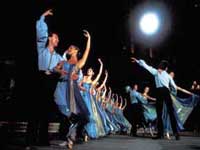
Vienna Festival (Festwochen)
Venue: Various
Date: 8 May to 14 June 2009
One of Vienna’s summer highlights, the Vienna Festival is a cultural spread of art, music, dance, theatre and opera performed by top international artists at main venues around the city. There are a huge variety of events, ranging from classical to modern, with shows, concerts and exhibitions for every taste. The annual International Music Festival coincides with the Vienna Festival, traditionally opened by the Vienna Philharmonic Orchestra.
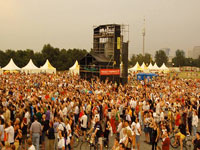
Donau (Danube) Island Festival
Venue: Donauinsel (Danube Island)
Date: 26 - 28 June 2009
The Danube Island Festival has become one of the largest youth parties in Europe and attracts millions from around the world to take part in a weekend of free entertainment, music and dancing. Besides local bands and DJs there are world-famous international artists, and numerous open-air performances that take place on various stages around the island.
Public Holidays
2009 |
2010 |
|
New Year's Day |
1 Jan |
1 Jan |
Epiphany |
6 Jan |
6 Jan |
Easter Monday |
13 Apr |
5 Apr |
National Holiday |
1 May |
1 May |
Ascension Day |
21 May |
13 May |
Whit Monday |
1 Jun |
24 May |
Corpus Christi |
11 Jun |
3 Jun |
Assumption of the Virgin Mary |
15 Aug |
15 Aug |
National Holiday |
26 Oct |
26 Oct |
All Saints' Day |
1 Nov |
1 Nov |
Immaculate Conception |
8 Dec |
8 Dec |
Christmas Day |
25 Dec |
25 Dec |
Boxing Day |
26 Dec |
26 Dec |
Airport
Vienna International Airport (VIE)
Location: The airport is located 11 miles (18km) southeast of Vienna.
Time: GMT +1 (GMT +2 between April to October).
Contacts: Tel: +43 (0)1 7007 22233 (24-hour telephone information service).
Getting to the city: Local trains and buses leave regularly for Vienna. There is also a City Airport Train, which provides a fast and direct service to the centrally located City Air Terminal that is connected to the underground, bus and tram networks. Trains depart every 30 minutes and operate between 5:38am to 12:05 costing €8 for the 16 minute ride. The S7 train also connects with Vienna every 30 minutes costing €3.40 although the ride is a bit longer with several stops. Taxis are available for €35 to the city centre from the arrivals hall (Tel: +43 7007 35910) and can be found outside the arrivals hall. A bus service takes 20 minutes to the city centre every 30 minutes between 6:20am and 12:20am and costs €6.
Car rental: Car hire companies include Avis, Hertz, Budget, Sixt and Thrifty.
Airport Taxis: There are taxis available from in front of the arrivals hall, call +43 7007 35910 to arrange bookings. The taxi fare is metered and will be about €35 to the city centre, and the drive takes around 30 minutes.
Facilities: There are more than 70 shops, including duty-free, as well as various restaurants and bars in both terminals. Bureaux de change and banks are available. Other facilities include airline lounges, luggage storage, business centres, Internet cafes and wireless Internet access, and a medical centre.
Parking: Short- and long-term parking is available. The parking lots and multi-storey car parks are connected to the terminal by signposted footpaths.
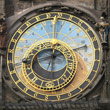
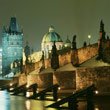
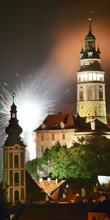
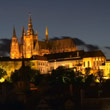
TRAVEL INFO |
|
©2006-2007 Rener Group. All rights reserved |
||
